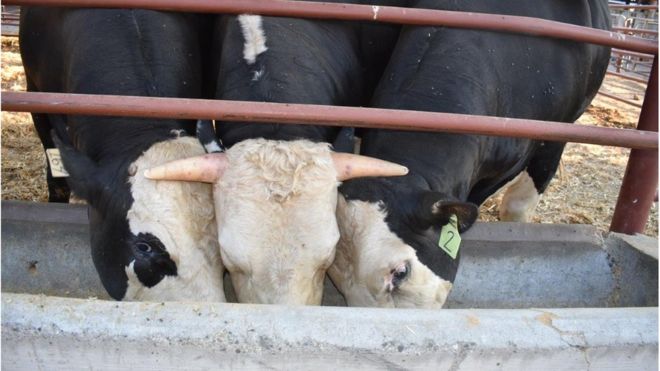
Hornless Cattle Now Possible Thanks to Genome-editing
October 16, 2019| |
Scientists form the University of California, Davis, along with colleagues from the University of Mansoura in Egypt have successfully used genome editing to produce hornless cattle, which can then pass on the genome-edited traits to their calves. Their findings also revealed that the process did not result in any unintended genetic changes in the calves.
"We've demonstrated that healthy hornless calves with only the intended edit can be produced, and we provided data to help inform the process for evaluating genome-edited animals," according to co-author Alison Van Eenennaam, from the UC Davis department of animal science. She added that genome-editing presents a more humane option to dehorning or physically removing the horns, which is an issue among animal welfare advocates since it is a painful process.
After sequencing the genomes of the calves and their parents, a plasmid (short stretch of bacterial DNA) was incorporated next to one of the two hornless genetic variants. With the insertion of the plasmid, the genome-edited bull can technically be considered a genetically-modified organism (GMO) since it now has foreign DNA from another species. The researchers assured that the plasmid does not hurt the animal.
To date, only the AquaAdvantage salmon has been able to pass the rigid regulatory approval process of genetically-modified animals in the US.
For more details, read the full journal article in Nature Biotechnology.
| |
You might also like:
- Pocket K No. 40: Biotechnology for the Livestock Industry
- Pocket K No. 55: Biotech-improved Animals
- Pocket K No. 52: Marine Biotechnology
Biotech Updates is a weekly newsletter of ISAAA, a not-for-profit organization. It is distributed for free to over 22,000 subscribers worldwide to inform them about the key developments in biosciences, especially in biotechnology. Your support will help us in our mission to feed the world with knowledge. You can help by donating as little as $10.
-
See more articles:
-
News from Around the World
- 14% of Global Food Goes to Waste, FAO Reports
- Study Reveals the Resilience of Rice to Floods
- Hornless Cattle Now Possible Thanks to Genome-editing
- FDA Approves Texas A&M's Ultra-Low Gossypol Cotton for Human and Animal Consumption
- Genomics-Assisted Breeding Delivers Two Improved Chickpea Varieties in Record Time
- Family of Crop Viruses Shown at High Resolution for the First Time
-
Research Highlights
- Plant Protein that Triggers Photoprotection Identified
- Genetically Engineered Plants Occur in Large Scale Naturally
-
Plant
- NAL8 Contributes to Leaf and Spikelet Development in Rice
- Large-scale Genomics for Wheat Improvement
-
Read the latest: - Biotech Updates (December 17, 2025)
- Gene Editing Supplement (December 17, 2025)
- Gene Drive Supplement (February 22, 2023)
-
Subscribe to BU: - Share
- Tweet

